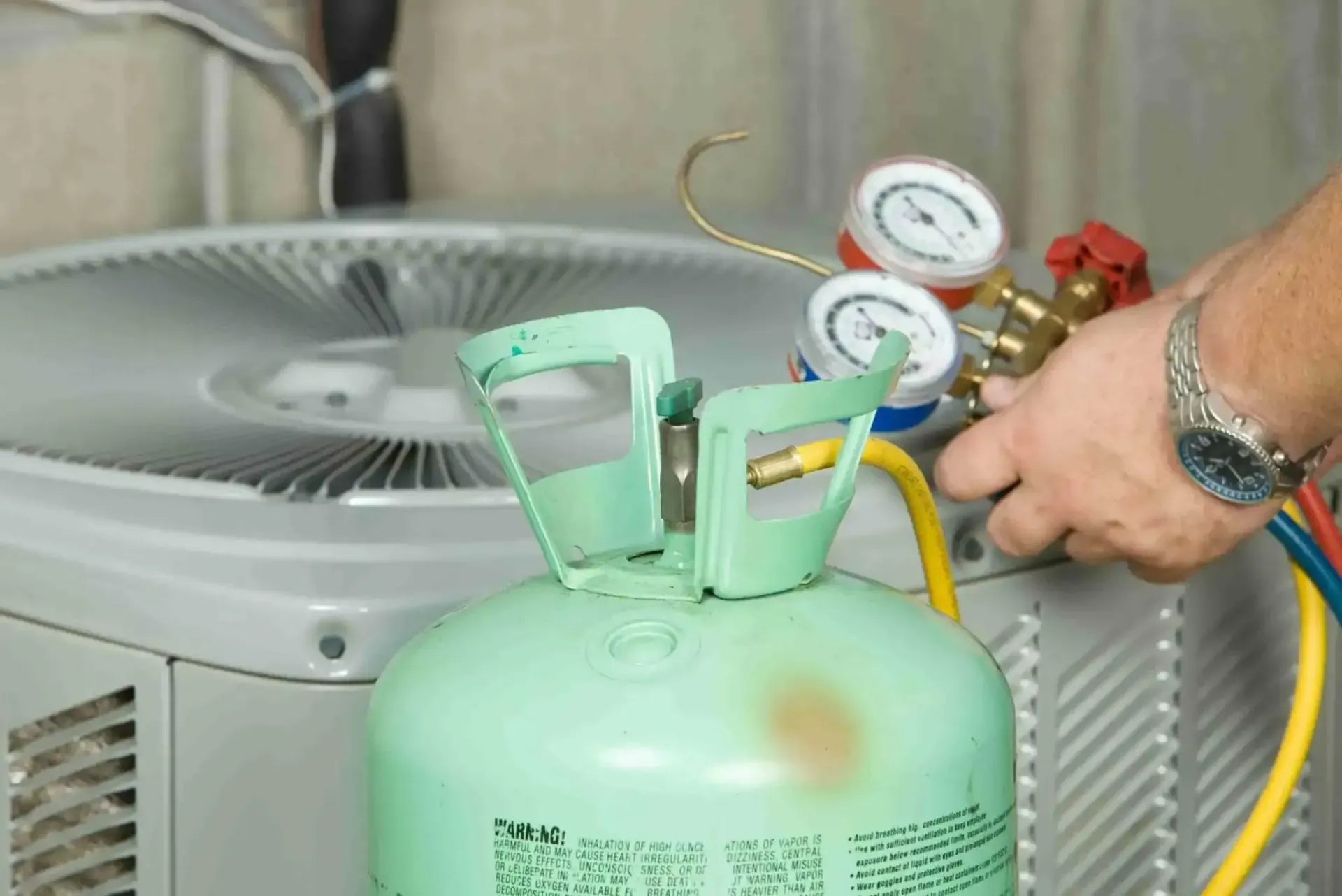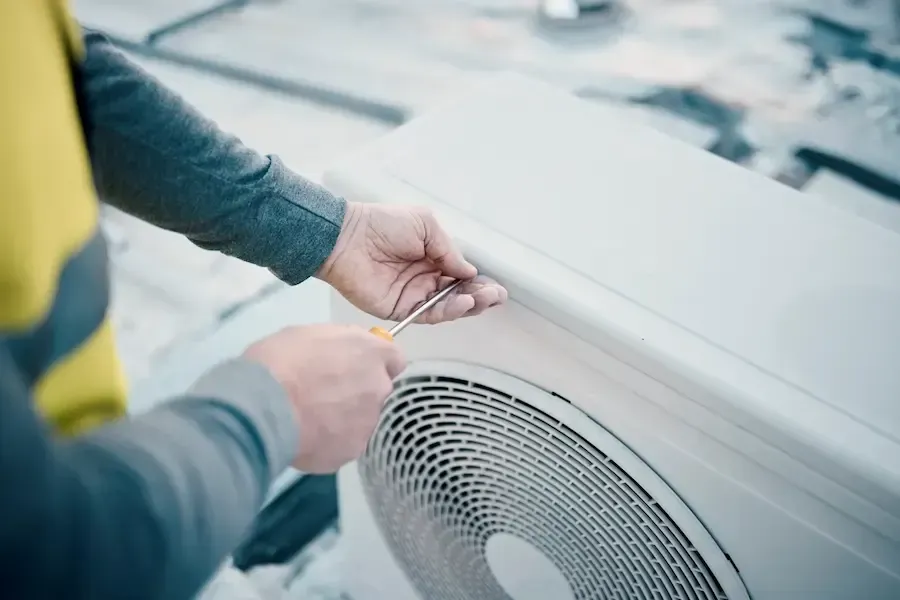Transition to A2L Refrigerant for Homeowners: What to Know
The transition to A2L refrigerant for homeowners is a hot topic in the HVAC industry. With growing environmental concerns, eco-friendly cooling solutions are a necessity. This move to A2L refrigerants marks a significant change in home cooling and heating. It promises to reduce greenhouse gas emissions and maintain comfortable HVAC systems. This article addresses what this refrigerant transition means for homeowners navigating this new landscape of sustainable home climate control. We’ll explore the benefits, challenges, and considerations of this change.
Understanding A2L Refrigerants: The Basics
A2L refrigerants are cooling agents designed to be more environmentally friendly. These refrigerants have a lower Global Warming Potential (GWP) than R-410A. This lower GWP means less impact on climate change if released into the atmosphere.

The push for A2L refrigerants comes from a global effort to combat climate change and reduce greenhouse gas emissions. The American Innovation and Manufacturing (AIM) Act of 2020 leads this charge in the United States. This bipartisan legislation intends to phase down the hydrofluorocarbons (HFCs) present in refrigerants.
Key Features of A2L Refrigerants
A2L refrigerants offer numerous advantages:
- Lower GWP: Puron Advance, an example of an A2L refrigerant, boasts a significant reduction in GWP.
- Energy Efficiency: Many A2L refrigerants offer improved energy efficiency, potentially saving money on utility bills.
- Mild Flammability: While mildly flammable, A2L refrigerants are safe with proper handling by trained professionals adhering to safety protocols and building codes.
The Environmental Impact of A2L Refrigerants
The transition to A2L refrigerants represents an important step in mitigating climate change risks. The HVAC industry significantly contributes to greenhouse gas emissions. This impact stems not only from energy consumption but also from high-GWP refrigerants.
A2L refrigerants drastically lower this GWP, significantly reducing environmental impact. For example, the A2L refrigerant R-454B has a GWP of 466, substantially less than R-410A’s GWP of 2,088.
What the A2L Transition Means for Homeowners
Here’s what homeowners should know:
1. System Compatibility
Current R-410A HVAC systems aren’t compatible with A2L refrigerants. Replacing your system requires opting for one designed for A2L refrigerants. Discuss options for A2L systems or electric heat pumps with a qualified technician.
2. Cost Considerations
A2L-compatible systems may initially cost more because of their new technology and enhanced safety features. However, their increased energy efficiency could offer long-term savings. Reduced energy consumption translates to lower monthly utility expenses, ultimately offsetting the higher initial investment.
3. Safety Measures
Though mildly flammable, A2L refrigerants are safe when handled correctly. New A2L systems have additional safety features such as refrigerant leak detection systems. These systems mitigate risks and ensure safe operation for homeowners.
4. Professional Installation and Maintenance
Work with HVAC professionals certified for A2L refrigerants. The Air Conditioning Contractors of America (ACCA) provides specialized A2L refrigerant training. Proper installation, furnace maintenance, and adherence to safety standards are vital.

Timeline for the A2L Transition
CThe A2L transition is gradual:
- January 1, 2025: Manufacturers must halt production of new residential air conditioning systems using refrigerants with a GWP of over 700. This includes residential air conditioning and air conditioning systems using traditional refrigerants. Equipment manufactured after this date will need to meet the new GWP limit.
- January 1, 2026: Installation of R-410A systems must conclude. After this date, residential air conditioning systems will be required to use the new, environmentally friendly refrigerants. This may affect the HVAC refrigerants available, so proper planning is crucial.
This timeframe lets homeowners and the industry adapt to the use of AL systems and AL refrigerants. If your current system works efficiently, there’s no need to immediately replace it. If you plan to upgrade soon, explore A2L options with your HVAC professional. Homeowners should research GWP refrigerants for the foreseeable future.
Preparing for the A2L Transition
Here’s how to prepare for the transition to A2L refrigerant:
1. Assess Your Current System
If your HVAC system nears its end-of-life (10-15 years), consider upgrading sooner. This helps you avoid supply problems or price hikes as the deadline nears. Upgrading sooner ensures a safe refrigerant transition while optimizing your air conditioning systems for improved energy efficiency.
2. Research A2L Options
Learn about A2L refrigerants and their systems. Research A2L options available and familiarize yourself with their specifications and how they can reduce greenhouse gases. Many manufacturers offer A2L-compatible systems now, letting you compare efficiency ratings.
3. Consult with HVAC Professionals
Discuss A2L refrigerants with certified HVAC professionals. They provide insights into your home and local climate. Ask about air quality improvements with A2L refrigerants and how they might affect HVAC systems in your home. Understanding how refrigerants required for air conditioners can impact indoor air quality is important for homeowners’ safety. Professionals can also help homeowners understand how the mild flammability of A2L refrigerants is addressed through stringent safety measures and proper installation practices, and offer advice on refrigerant systems and the refrigerant transition to mitigate risks effectively.
4. Consider Energy Efficiency
Although A2L systems cost more upfront, their improved energy efficiency leads to significant long-term savings. Consider long-term cost savings when making decisions.
5. Stay Informed About Regulations
Follow local and state A2L refrigerant regulations. Some states have stricter rules or deadlines. The Air-Conditioning, Heating, and Refrigeration Institute (AHRI) offers an interactive map displaying A2L refrigerant regulations by state.
The Future of Home Cooling
The transition to A2L refrigerants contributes to a more sustainable future and promotes American innovation in cooling solutions. Every reduction in greenhouse gas is crucial against climate change. Embracing A2L refrigerants cools our homes while cooling the planet. They offer a promising pathway for improved residential air conditioning, particularly in comparison to traditional systems reliant on potent greenhouse gasses.
This transition also fosters HVAC technology innovation. Expect continued advancements in energy efficiency and smart home integration. New, more environmentally friendly refrigerants are coming. Look for further improvements to indoor air quality, refrigerant leak detection capabilities, and duct cleaning solutions as the industry adapts.

These advancements align with growing regulatory mandates, ultimately ensuring a safer, healthier, and more sustainable future through safe refrigerant transitions and friendly refrigerants. The emphasis is on creating residential air conditioning systems that minimize environmental impact through the use of specialized equipment, safety protocols, and reduced environmental footprints, providing consumers with enhanced safety and long-term savings.
Consumers should consider these factors, along with appropriate furnace maintenance and awareness of potential requirements for refrigerants required by environmental regulations. Finally, for those considering alternative options, comparing traditional systems with those employing an electric heat pump or understanding the principles behind electric heat may further enhance informed decision-making within the ever-evolving landscape of residential air conditioning.
This shift emphasizes creating residential air conditioning systems that prioritize minimizing environmental impact through the use of specialized equipment, robust safety protocols, and a tangible reduction in environmental footprints, ultimately delivering to homeowners enhanced safety standards coupled with the potential for long-term cost savings. It’s also beneficial for homeowners to remain aware of these aspects, combined with essential furnace maintenance practices and an understanding of the types of refrigerants required under prevailing environmental regulations.
Final Thoughts on the Transition to A2L Refrigerant for Homeowners
The transition to A2L refrigerant for homeowners signifies a major change in home cooling and heating. Though it might appear complex, this change offers the chance to install efficient and environmentally responsible systems. These systems provide long-term advantages for both your house and the earth.
As the 2025 deadline approaches, staying informed is important. Work with certified professionals for a seamless transition. Understanding the implications of A2L refrigerants allows you to make good decisions about your home’s HVAC system. Doing so will provide comfort, efficiency, and environmental responsibility in the future.
Contact us today for more information or to schedule a free consultation.
Breathe Easy, Live Healthy
A comfortable home isn’t just about plush furniture or aesthetically pleasing decor. It’s also about creating a safe and healthy environment for all inhabitants. Prioritizing duct cleaning is integral in enhancing indoor air quality, paving the way for better health and overall well-being.
For those keen on elevating the air quality in their homes and reaping the numerous benefits of clean air ducts, don’t hesitate. Contact Economy Heating & Air to get the job done right and breathe a sigh of relief!

